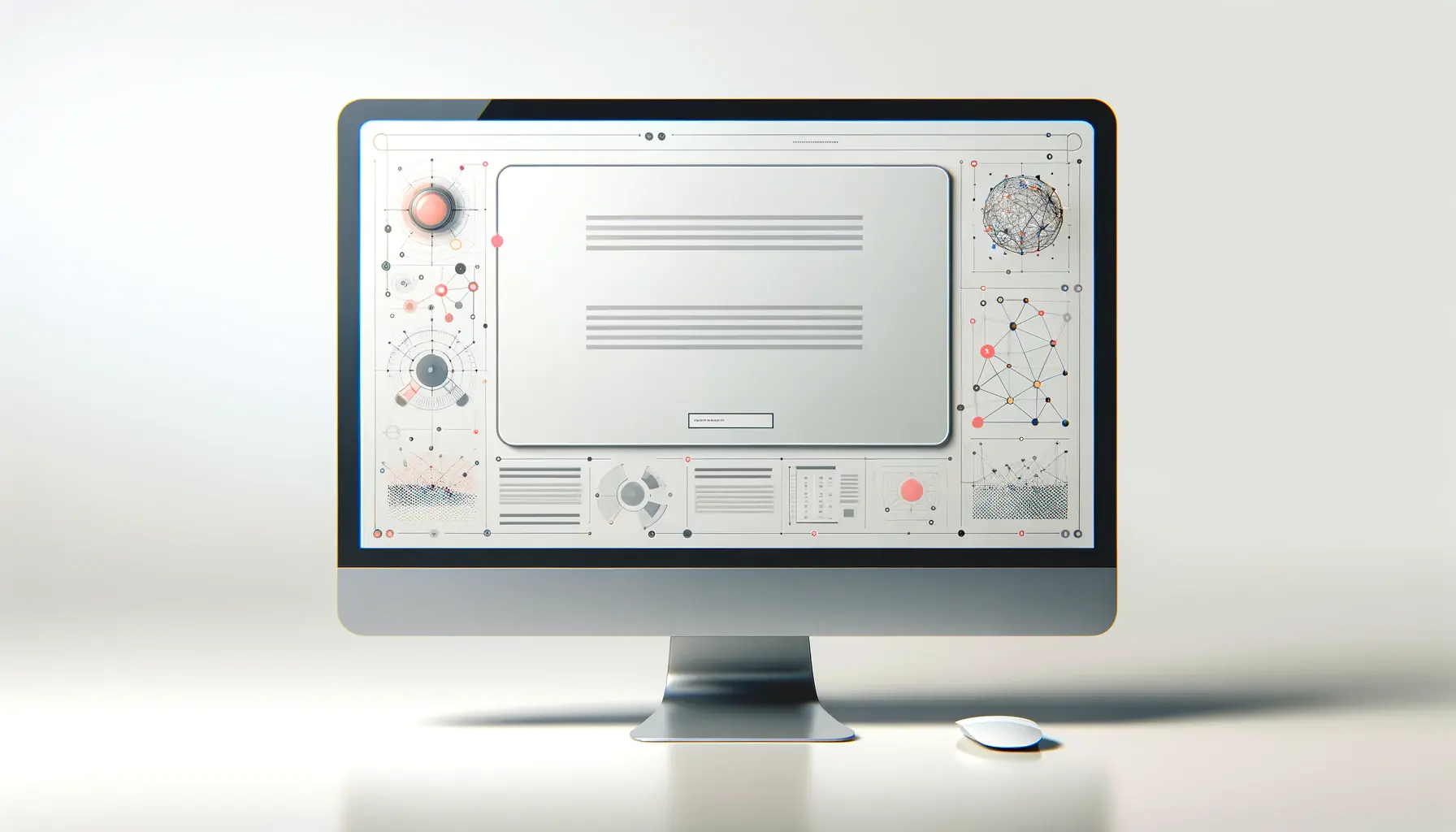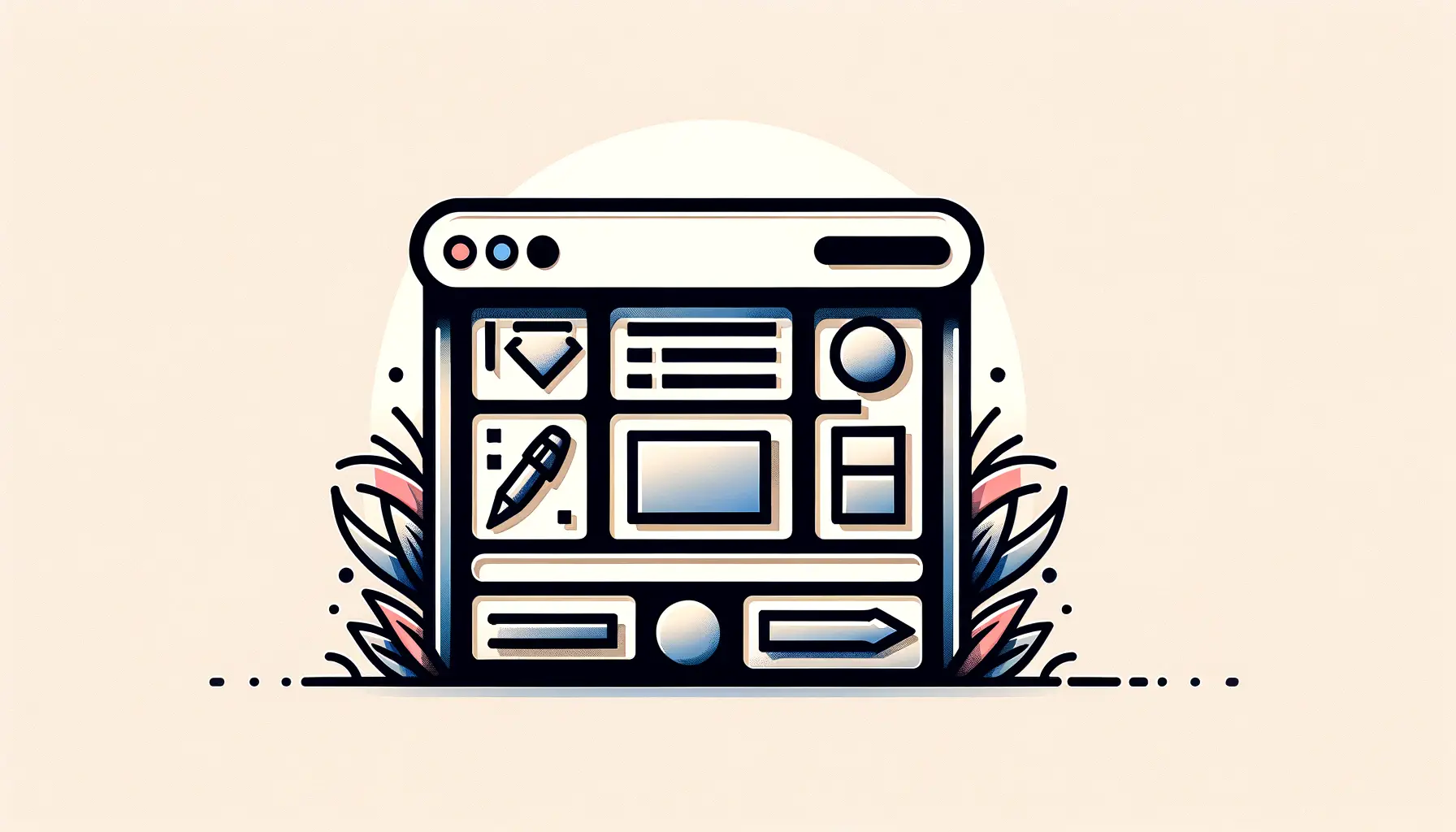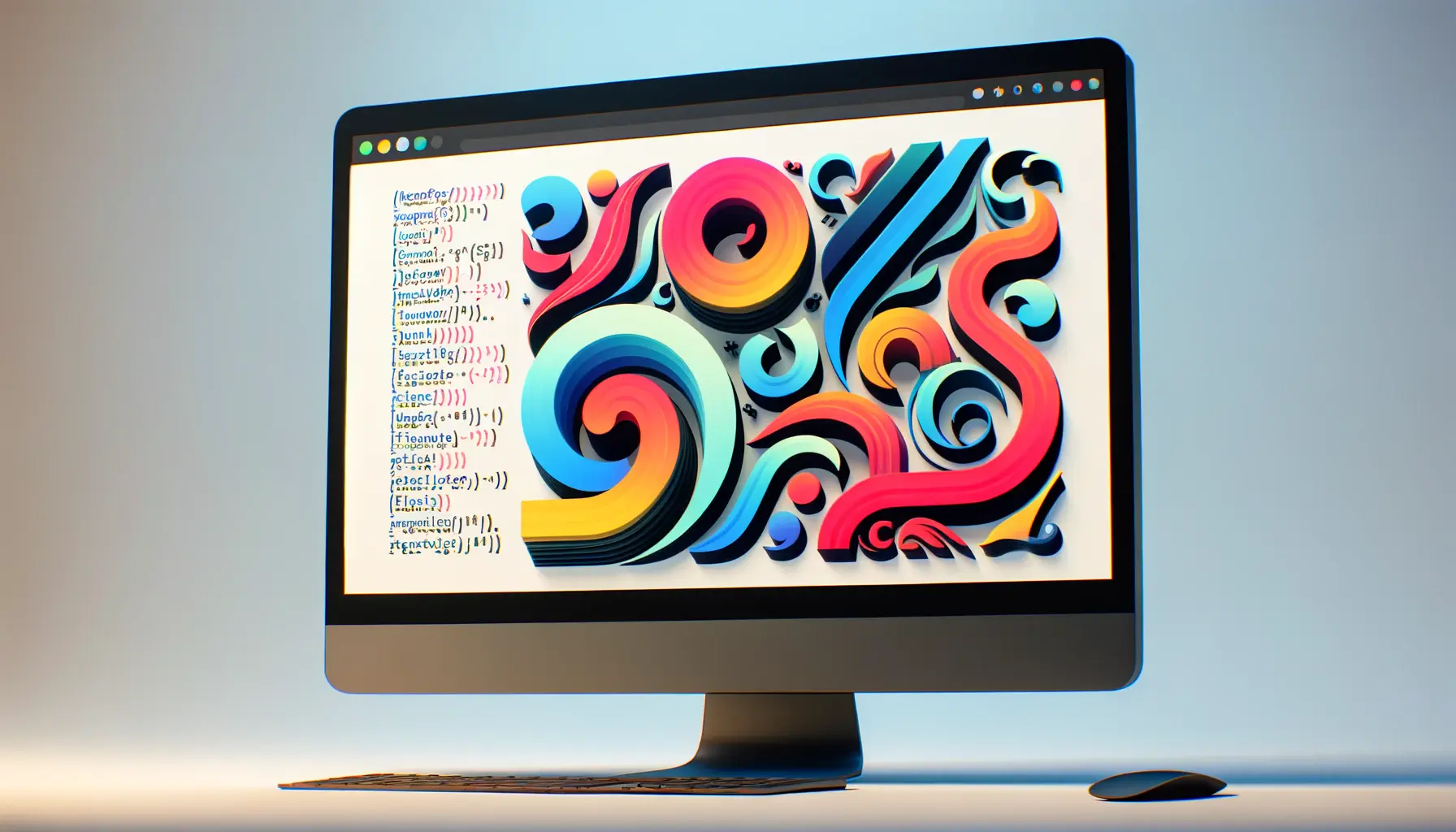The digital age has ushered in a new era of communication, where the boundaries of language and geography are increasingly blurred.
In this context, the integration of multilingual typography into global web design has emerged as a pivotal strategy for businesses and creators aiming to reach a diverse, international audience.
Multilingual typography, the practice of designing web content to support multiple languages, is not just about translating text but about creating a visually harmonious and culturally sensitive user experience.
As the internet continues to grow as a global marketplace, the importance of incorporating multilingual capabilities into web design cannot be overstated.
This approach not only enhances accessibility and inclusivity but also significantly boosts a brand’s global reach.
By acknowledging and catering to the linguistic preferences of a wider audience, websites can foster a deeper connection with users, encouraging engagement and fostering trust.
- The Significance of Multilingual Typography
- Best Practices for Implementing Multilingual Typography
- Challenges in Multilingual Typography and Solutions
- Technological Tools and Resources for Multilingual Typography
- Case Studies: Successful Multilingual Typography in Web Design
- Typography Trends in Multilingual Web Design
- Future Directions in Multilingual Typography
- Embracing the Future of Multilingual Typography in Global Web Design
- FAQs on Integrating Multilingual Typography in Global Web Design
The Significance of Multilingual Typography
Multilingual typography in web design transcends the mere translation of content from one language to another.
It involves a nuanced understanding of cultural nuances, script differences, and typographic requirements across languages.
This complexity is compounded by the need to maintain a consistent brand identity and ensure that the website’s aesthetic appeal is not compromised in any language.
One of the key challenges in integrating multilingual typography is the selection of fonts that support a wide array of characters and scripts.
Not all fonts are created equal, and many lack the comprehensive character sets required to display non-Latin scripts such as Cyrillic, Arabic, or Chinese.
The choice of font can significantly impact the readability and user experience of a website, making it crucial to select typefaces that are both visually appealing and functionally robust across languages.
Design Considerations for Multilingual Websites
Designing for a multilingual audience requires careful consideration of various factors, including text direction, script-specific requirements, and the cultural connotations of color and imagery.
For instance, languages such as Arabic and Hebrew are read right-to-left (RTL), necessitating a mirrored layout for websites in these languages.
Similarly, the visual density of characters in scripts like Chinese may require adjustments to line spacing and font size to ensure optimal readability.
Beyond the technical aspects, understanding the cultural context of each target audience is paramount.
Colors, symbols, and images that are effective in one cultural context may not resonate—or may even be offensive—in another.
This cultural sensitivity extends to the choice of imagery and the representation of diverse communities, ensuring that the website reflects a global perspective.
The integration of multilingual typography into global web design is not merely a technical challenge but a strategic opportunity to embrace diversity and foster inclusivity.
In summary, the integration of multilingual typography into global web design is an essential strategy for reaching and engaging a diverse international audience.
By carefully selecting fonts, considering script-specific requirements, and embracing cultural sensitivity, designers can create websites that are not only visually appealing but also accessible and relevant to users around the world.
Best Practices for Implementing Multilingual Typography
Implementing multilingual typography in web design is a multifaceted process that requires attention to detail, cultural sensitivity, and technical expertise.
To ensure a seamless and effective multilingual user experience, there are several best practices that designers and developers should follow.
Font Selection for Global Compatibility
Choosing the right font is crucial for multilingual typography.
The ideal font should have a comprehensive character set that supports the languages your website will display.
Additionally, the font should align with your brand’s visual identity, ensuring consistency across different languages.
- Universal Fonts: Opt for fonts like Google Noto, which are designed to cover a wide range of languages and scripts, minimizing the “tofu” effect where unsupported characters are displayed as blank boxes.
- Font Testing: Rigorously test fonts across different browsers and devices to ensure compatibility and readability in all target languages.
Responsive Design for Language Variability
Text length can vary significantly between translations, affecting layout and design.
Responsive design techniques can help accommodate these variations without compromising the user experience.
- Flexible Layouts: Use fluid grid layouts that can adjust to text expansion or contraction across languages.
- Dynamic Text Sizing: Implement dynamic text resizing to ensure that longer words or phrases do not break the layout or become unreadable.
Cultural Considerations in Typography
Typography is not just about readability; it also carries cultural connotations.
It’s important to consider the cultural context of your audience when selecting fonts and designing your website.
- Color and Symbolism: Be mindful of the cultural meanings of colors and symbols in different regions to avoid misinterpretation or offense.
- Imagery: Select images and graphics that are culturally relevant and inclusive, reflecting the diversity of your global audience.
Remember, the goal of multilingual typography is not just to make your website accessible in multiple languages but to create a welcoming and engaging experience for users from diverse cultural backgrounds.
By adhering to these best practices, you can create a multilingual website that is not only visually appealing but also culturally sensitive and inclusive.
This approach not only enhances the user experience but also strengthens your brand’s global presence.
Challenges in Multilingual Typography and Solutions
While the integration of multilingual typography into web design offers numerous benefits, it also presents a set of unique challenges.
Addressing these challenges requires a strategic approach and innovative solutions to ensure a seamless and inclusive user experience.
Handling Text Direction and Script Variations
Different languages and scripts come with their own set of typographic rules, including variations in text direction and character sets.
These variations can pose significant challenges in maintaining a consistent layout and design across languages.
- Right-to-Left (RTL) Scripts: Languages like Arabic, Hebrew, and Persian are written from right to left. This requires mirroring the website layout for RTL languages, including navigation menus, text alignment, and even graphical elements.
- Solution: Utilize CSS and HTML attributes specifically designed for RTL support, such as the “dir” attribute, to automatically adjust the layout based on the language direction.
Font Compatibility Across Languages
Finding fonts that support a wide range of languages and scripts can be challenging.
Additionally, ensuring that these fonts display correctly on various devices and browsers adds another layer of complexity.
- Font Licensing and Availability: Some fonts may not be licensed for use across all regions, or they may not include the necessary character sets for all target languages.
- Solution: Opt for open-source or widely licensed fonts that are known for their extensive language support. Conduct thorough testing on different devices and browsers to ensure compatibility.
Cultural Sensitivity in Typography
Typography is deeply rooted in cultural identity, and what works for one culture may not be appropriate for another.
Ensuring cultural sensitivity in typography is crucial for creating an inclusive and respectful online environment.
- Cultural Misinterpretations: Certain fonts or typographic styles may carry unintended connotations in different cultural contexts, leading to misinterpretation or offense.
- Solution: Engage with cultural consultants or native speakers during the design process to gain insights into cultural nuances. This can help in selecting fonts and designing elements that are culturally appropriate and respectful.
Incorporating multilingual typography into web design is not just a technical task but a cultural endeavor. Understanding and respecting the linguistic and cultural diversity of your audience can transform challenges into opportunities for global engagement.
By addressing these challenges with thoughtful solutions, designers and developers can create multilingual websites that are not only functional and accessible but also culturally resonant and engaging for a global audience.
Technological Tools and Resources for Multilingual Typography
In the realm of global web design, leveraging the right technological tools and resources is crucial for effectively implementing multilingual typography.
These tools not only facilitate the design process but also ensure that websites are accessible and engaging for a diverse international audience.
Font Libraries and Type Tools
Font libraries and type tools offer a vast array of fonts that support multiple languages, making it easier for designers to find and implement the right typography for their multilingual websites.
- Google Fonts: An extensive library of free and open-source fonts that support multiple languages, including non-Latin scripts. Google Fonts is widely used for its ease of integration and broad compatibility.
- Adobe Fonts: Provides a wide selection of high-quality fonts with extensive language support. Adobe Fonts is integrated with Creative Cloud, making it a convenient option for designers using Adobe products.
Web Development Frameworks and CMS Plugins
Modern web development frameworks and content management system (CMS) plugins are equipped with features that simplify the creation and management of multilingual websites.
- WordPress Multilingual Plugins: Plugins like WPML and Polylang allow for easy management of multilingual content within WordPress, including typography settings for different languages.
- Bootstrap and Other Frameworks: Many web development frameworks offer built-in support for RTL languages and are designed to be flexible for multilingual content, aiding in responsive design across language variations.
Localization and Translation Management Platforms
Localization and translation management platforms streamline the process of translating and localizing web content, including typographic elements.
- Weglot: A cloud-based platform that offers website translation and localization services, including automatic content detection and translation, with support for over 100 languages.
- Transifex: Provides a comprehensive platform for managing localization projects, including web and app interfaces, with tools for collaborative translation and quality assurance.
The right technological tools can significantly enhance the efficiency and effectiveness of integrating multilingual typography into web design, ensuring that websites are accessible, culturally sensitive, and visually appealing to a global audience.
By utilizing these tools and resources, designers and developers can overcome the technical challenges of multilingual web design, from font selection to content localization, creating websites that truly resonate with users worldwide.
Case Studies: Successful Multilingual Typography in Web Design
Exploring real-world examples provides valuable insights into the successful integration of multilingual typography in web design.
These case studies highlight the strategic approaches and solutions implemented by various organizations to create inclusive, engaging, and accessible websites for a global audience.
Airbnb’s Multilingual Website Redesign
Airbnb’s redesign of its website to support multiple languages and cultures stands as a benchmark in multilingual web design.
The company focused on creating a universally welcoming user experience, accommodating various scripts, including complex ones like Arabic and Chinese.
By employing a flexible grid system and a carefully selected font that supports numerous languages, Airbnb ensured that its website looks and feels consistent across different regions.
This redesign not only improved usability but also significantly increased engagement from non-English-speaking users.
The success of Airbnb’s multilingual website redesign underscores the importance of thorough research, user testing, and a commitment to cultural sensitivity.
It demonstrates how attention to typographic details can enhance the global user experience, making the platform more accessible and inviting to a diverse audience.
United Nations’ Multilingual Digital Presence
The United Nations (UN) website is another exemplary case of multilingual typography in action.
Given its global reach and the diversity of its audience, the UN’s website supports all six official UN languages.
This commitment to multilingualism is evident in the site’s design, which features a clean, readable font that accommodates various character sets and scripts.
The UN’s approach to multilingual web design emphasizes clarity, accessibility, and inclusivity, ensuring that vital information is available to people around the world, regardless of language.
This case study highlights the critical role of multilingual typography in disseminating information on a global scale.
The UN’s website serves as a model for organizations aiming to create a digital presence that is truly global and inclusive.
Both Airbnb and the United Nations exemplify how effective multilingual typography can bridge language barriers, foster inclusivity, and enhance the global reach of a website. These case studies offer inspiration and practical insights for designers and organizations looking to create a more accessible and engaging online experience for users worldwide.
Through strategic design choices and a focus on user experience, these organizations have successfully navigated the complexities of multilingual typography, setting a standard for others to follow in the pursuit of a more connected and inclusive digital world.
Typography Trends in Multilingual Web Design
The landscape of web design is constantly evolving, with typography playing a pivotal role in shaping user experiences.
In the realm of multilingual web design, staying abreast of typography trends is crucial for creating engaging, accessible, and culturally resonant websites.
Here, we explore some of the current trends in multilingual typography that are influencing global web design.
Increased Use of Variable Fonts
Variable fonts are emerging as a game-changer in multilingual typography, offering a single font file that behaves like multiple fonts.
This technology allows for adjustable variations in weight, width, and other attributes without loading multiple font files, making it ideal for multilingual settings.
- Benefits: Reduces load times and enhances performance across different languages.
- Application: Enables seamless adaptation of typography to various languages and scripts within a unified design framework.
Emphasis on Cultural Sensitivity
As the digital world becomes more interconnected, there’s a growing emphasis on cultural sensitivity in typography.
Designers are increasingly mindful of the cultural implications of typographic choices, ensuring that fonts and design elements are appropriate and respectful across cultures.
- Implementation: Selecting fonts and typographic styles that are culturally relevant and sensitive to the target audience’s preferences.
- Impact: Enhances user engagement and fosters a positive brand perception globally.
Adoption of Localized Typography
Localized typography, which tailors typographic elements to specific cultural and linguistic contexts, is gaining traction.
This approach goes beyond translation, embedding local cultural nuances into the design to create a more authentic user experience.
- Strategy: Incorporating local typographic traditions and styles to resonate with the target audience.
- Outcome: Builds deeper connections with users by reflecting their cultural identity and linguistic heritage.
Staying informed about these trends and incorporating them into multilingual web design projects can significantly enhance the global user experience, making websites more accessible, engaging, and culturally inclusive.
By embracing variable fonts, prioritizing cultural sensitivity, and adopting localized typography, designers can create multilingual websites that not only meet the technical demands of global web design but also enrich the user experience with cultural depth and relevance.
Future Directions in Multilingual Typography
The future of multilingual typography in web design holds promising advancements and challenges as the digital landscape continues to evolve.
With the increasing importance of global communication and the need for inclusivity, the role of typography in creating accessible and engaging online experiences for diverse audiences has never been more critical.
Here, we explore potential future directions in multilingual typography that could shape the next era of global web design.
Artificial Intelligence in Font Design
Artificial Intelligence (AI) is set to revolutionize multilingual typography by automating and enhancing the font design process.
AI technologies can analyze and generate fonts that are optimized for readability and aesthetic appeal across different languages and scripts.
- Potential Impact: Creation of dynamic fonts that adapt to user preferences and context, improving the user experience for global audiences.
- Challenges: Ensuring that AI-generated fonts maintain cultural sensitivity and authenticity.
Augmented Reality and Typography
Augmented Reality (AR) offers new possibilities for interactive and immersive typographic experiences.
In a multilingual context, AR can provide real-time translations and culturally relevant typographic displays, bridging language gaps and enhancing understanding.
- Applications: AR could enable users to view web content in their preferred language and script through real-time overlays, making the web more accessible and personalized.
- Considerations: Balancing technological innovation with user privacy and ensuring accessibility for users with different levels of tech proficiency.
Global Collaboration in Typography
The future of multilingual typography will likely see increased collaboration across borders, with designers, linguists, and cultural experts working together to create fonts and typographic solutions that truly reflect the world’s linguistic diversity.
- Benefits: Leveraging global expertise to create more inclusive and culturally resonant typographic designs.
- Challenges: Coordinating efforts across different time zones and cultural contexts, while maintaining a cohesive design vision.
Embracing these future directions in multilingual typography can lead to more innovative, inclusive, and engaging web designs that cater to the global audience’s diverse needs and preferences.
As we look to the future, the integration of advanced technologies like AI and AR, along with a commitment to global collaboration, will be key to advancing multilingual typography.
These efforts will not only enhance the aesthetic and functional aspects of web design but also promote a more inclusive and connected digital world.
Embracing the Future of Multilingual Typography in Global Web Design
The journey through the intricacies of integrating multilingual typography into global web design reveals a landscape rich with challenges, innovations, and opportunities.
As the digital world becomes increasingly interconnected, the ability to communicate effectively across linguistic and cultural boundaries has never been more crucial.
Multilingual typography stands at the forefront of this endeavor, offering a bridge between diverse global audiences and the content they seek.
The Path Forward
Looking ahead, the future of multilingual typography in web design is poised for transformative growth, driven by technological advancements and a deepening appreciation for cultural diversity.
The integration of AI in font design, the potential of augmented reality, and the power of global collaboration highlight the dynamic directions in which multilingual typography is headed.
These developments promise to make the web a more inclusive, accessible, and engaging space for users worldwide.
Key Takeaways for Designers and Developers
- Adopting variable fonts and responsive design techniques to accommodate text variability across languages.
- Emphasizing cultural sensitivity and localized typography to create more authentic and resonant user experiences.
- Leveraging technological tools and resources, such as font libraries and web development frameworks, to streamline the design process.
- Staying informed about trends and future directions in multilingual typography to remain at the cutting edge of web design.
In conclusion, the integration of multilingual typography into global web design is not merely a technical challenge but a profound opportunity to foster global communication and understanding.
By embracing the complexities and nuances of multilingual typography, designers and developers can create websites that not only transcend language barriers but also celebrate the rich tapestry of human culture.
As we move forward, the commitment to inclusivity, accessibility, and innovation will continue to shape the evolution of multilingual typography, ensuring that the web remains a vibrant and welcoming space for all.
Quality web design is key for a great website! Check out our service page to partner with an expert web design agency.
FAQs on Integrating Multilingual Typography in Global Web Design
Discover essential insights into effectively incorporating multilingual typography into your web design projects with these frequently asked questions.
Multilingual typography involves designing web content to support and display text in multiple languages and scripts effectively.
It enhances accessibility, inclusivity, and global reach by catering to the linguistic preferences of a diverse audience.
Select fonts with comprehensive character sets that support the languages and scripts your website will display.
Challenges include managing text direction, script variations, and ensuring cultural sensitivity across different languages.
Yes, AI can automate font design, optimizing readability and aesthetic appeal across languages and scripts.
Responsive design adapts to text expansion or contraction across languages, ensuring a consistent layout and user experience.
Cultural sensitivity ensures that typographic choices are appropriate and respectful across different cultural contexts.
Trends include the use of variable fonts, AI in font design, and augmented reality for immersive typographic experiences.










